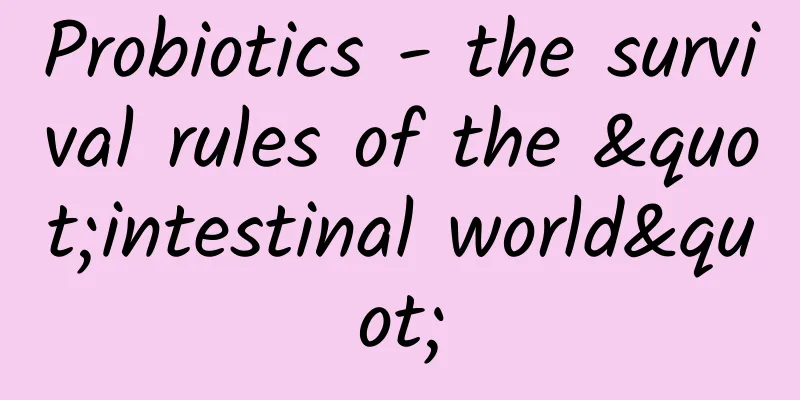Probiotics - the survival rules of the "intestinal world"

|
Author: Cui Yihui, registered dietitian, master of medicine Reviewer: Wang Junbo, Associate Professor and Doctoral Supervisor, Peking University Health Science Center Let me first introduce you to some "intestinal" knowledge about the human intestinal world. The intestine is the main place where the human body absorbs nutrients. The intestine is the largest immune organ in the human body. The intestine is the largest "waste disposal plant" in the human body. The intestine is a digestive organ and also the "second brain" of the human body. Of course, the huge "intestinal world" is also the place where various bacteria colonize, including probiotics, pathogenic bacteria and neutral bacteria, which together form a relatively stable intestinal flora in the human body. (Copyrighted image from the gallery, no permission to reprint) In the intestinal flora of healthy people, there are more probiotics and fewer pathogenic bacteria. While probiotics are constantly proliferating, pathogenic bacteria are also constantly multiplying. Probiotics must not let pathogenic bacteria gain the upper hand, otherwise even neutral bacteria may "rebel against the enemy" and start "making trouble". Therefore, probiotics often inhibit the growth and reproduction of pathogenic bacteria through the following three means. Fighting for "territory" : Probiotics compete with harmful bacteria for colonization sites on the intestinal wall (this is the "stronghold" where bacteria "take root" in the intestines). This is more conducive to competing for nutrients and expelling harmful bacteria from the intestines. Changing the intestinal ecological environment : Probiotics lower the pH of the intestinal cavity by producing lactic acid, creating an acidic environment. The growth of pathogenic bacteria and E. coli that prefer an alkaline environment is inhibited or even killed in an acidic environment. Enhance the activity of intestinal immune cells (macrophages) : Probiotics can produce some biochemical signal substances, which are transmitted to macrophages. Macrophages recognize the colonization sites of pathogens and phagocytize them, thereby eliminating the pathogens. This is the "survival wisdom" of the little probiotics in the "intestinal world". It seems easy, but it is difficult to do. As the host of probiotics, we need to take practical actions to cheer them up. The first step is to remember to take soluble dietary fiber (prebiotics) every day to feed them and let them fight with full energy! |
<<: High sugar and high fat content? Understand these 5 things to eat mooncakes safely!
>>: He is not overthinking or being petty, but he is really depressed.
Recommend
How to whiten dark skin effectively?
The problem of dark yellow skin bothers many peop...
How to quickly recover from cracked nipples for new mothers
When women just become mothers, due to lack of kn...
How to tell if your period is coming
In the past, menstruation was a sign that a girl ...
What to do at 20 weeks of prenatal check-up
For pregnant female friends, it is generally nece...
What is the problem of small fleshy spots on the labia?
The labia is also a part of the female reproducti...
What to do if a woman has high testosterone
Many women don’t know what testosterone is. Testo...
How to judge whether the dough is fermented well?
We all know that when many people make bread, cak...
What is generally caused by polycystic ovary syndrome?
Polycystic ovary syndrome is a common gynecologic...
What should I do if I have slight pain on the left side of my lower abdomen during menstruation?
Many women think that being a woman is painful be...
What should pregnant women eat for constipation?
It is an extremely common phenomenon for pregnant...
Two bars means pregnancy?
The pregnancy test strip is used to test the earl...
Is weight loss during menopause normal?
Many people will gain weight when they reach 40, ...
Do you need to avoid certain foods when you have candidal vaginitis?
In many cases, gynecological inflammation is real...
How to eliminate external hemorrhoids in pregnant women
Pregnant women are the group most likely to devel...
Time and method of clinical diagnosis of early pregnancy
The so-called early pregnancy generally refers to...









